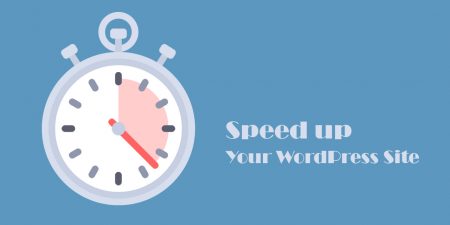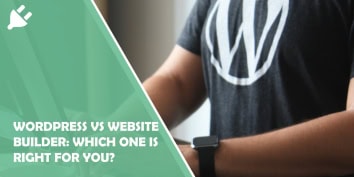There can be little doubt the popularity of WordPress has led to a veritable explosion…
In the fast-paced world of the internet, speed matters. As a WordPress user, you must understand the importance of keeping your website running smoothly and efficiently. However, unexpected obstacles, like slow loading times, interfere with your site’s performance and impact the user experience. That’s where website speed hacks come into play.
In this guide, we’ll explore website speed optimization hacks for WordPress sites. We’ll dive into the significance of a reliable WordPress hosting provider, its impact on user experience and search engine optimization (SEO) and provide actionable tips and strategies to help you enjoy the full potential of your WordPress website.
Whether you’re a seasoned WordPress user or just starting out, these speed hacks will empower you to optimize your site for speed, ensuring a seamless browsing experience for your visitors and enhancing your site’s visibility in search engine results. Let’s dive in!

Understand Website Speed
Website speed refers to how quickly your web pages load and display content to visitors. When someone clicks on your site, they want to see your content right away. The faster your site loads, the better the experience for your visitors.
How does website speed affect user experience? Website speed has a big impact on how visitors feel about your site. If your pages load quickly, visitors can easily find the information they need, browse your content, and enjoy their time on your site. A fast-loading site makes visitors happy and keeps them engaged.
On the other hand, if your site is slow, visitors might get frustrated and leave before your page even loads. This is especially true for mobile users, who expect sites to load quickly on their devices.
Slow websites can lead to higher bounce rates, which means people leave your site without exploring it further. This not only hurts the visitor experience but also your business, as potential customers might go to a competitor’s site instead.
Importance of Speed for SEO and Rankings
Website speed is also crucial for search engine optimization (SEO). Search engines like Google use site speed as a ranking factor. This means that faster websites are more likely to appear higher in search results. When your site ranks higher, more people can find it, leading to increased traffic and more opportunities for engagement and sales. A fast site helps improve your rankings in several ways:
- Lower Bounce Rates: When your site loads quickly, visitors are more likely to stay and explore, which reduces your bounce rate. A lower bounce rate signals to search engines that your site provides valuable content.
- Better User Experience: Search engines aim to provide the best results for their users. A fast site contributes to a positive user experience, making it more likely that search engines will rank your site higher.
- Mobile Optimization: With more people browsing on mobile devices, having a fast, mobile-friendly site is essential. Google’s mobile-first indexing means that your mobile site speed directly affects your search rankings.
By understanding and improving your website speed, you can create a better experience for your visitors and boost your SEO, helping your site reach its full potential.
Speed Hacks to Improve Your WordPress Site
Website speed is affected by various reasons, including heavy images and media files, poor hosting services, too many WordPress plugins, unoptimized themes, and lack of caching. All of these can be fixed using the following speed hacks:
Optimize Images
Large images can significantly slow down your website. To fix this, you can use image compression tools. These tools reduce the file size of your images without losing quality, making your site load faster. Two popular options are TinyPNG and Smush.
Additionally, choosing the right image format can also help improve your site’s speed. Different formats are better suited for different types of images:
- JPEG: Best for photographs and images with lots of colors. JPEGs are generally smaller in size compared to other formats.
- PNG: Ideal for images that need transparency, like logos. While PNGs can be larger, they maintain high quality.
- WebP: A modern image format that provides superior compression. WebP images are smaller and load faster than JPEGs and PNGs while maintaining high quality.
Furthermore, if your content contains many pictures, you might want them to load only when they come into view. In this case, the lazy loading technique is used, which speeds up the initial page load time, making your site feel faster.
Use a Content Delivery Network (CDN)
A Content Delivery Network (CDN) is a system of servers worldwide. These servers store copies of your website’s files, like images, stylesheets, and scripts. When someone visits your site, the CDN delivers the files from the server that is closest to them.
This reduces the distance data travel, making your site load faster. Moreover, you can enjoy multiple benefits using a CDN, including faster load times, improved reliability, reduced bandwidth costs, and better user experience.
Choose a Reliable Hosting Provider
Choosing a reliable hosting provider is one of the most important decisions for your site’s speed and performance. Good hosting provides the foundation for your site’s performance. When you have reliable hosting, your site can handle more traffic, load pages faster, and deliver a better experience for your visitors.
If your hosting provider is slow or unreliable, it doesn’t matter how much you optimize your site; it will still perform poorly. A good host ensures that your site is always available and can handle peak times when lots of visitors are accessing your site at once.
Minimize HTTP Requests
Every time someone visits your website, their browser sends requests to your server to fetch files needed to display the page. These files include HTML, CSS, JavaScript, images, and more. Each request takes time, so the more requests your site makes, the longer it takes to load.
Here, you need to do the following to reduce the number of requests:
- Instead of having separate CSS and JavaScript files for each page, combine them into one or a few files. This reduces the number of requests needed to load your site.
- Remove any unnecessary code, comments, or whitespace from your files. Smaller files load faster, so optimizing them can speed up your site.
- Combine multiple images into a single image file and use CSS to display only the part you need. This reduces the number of image requests and speeds up load times.
You can also use plugins like Autoptimize to automatically combine and minify your CSS and JavaScript files. These plugins also provide options to optimize HTML and cache files, further reducing the number of HTTP requests and improving your site’s speed.
Optimize Your Database
Your WordPress database stores all the content, settings, and other information for your site. Over time, it can become cluttered with unnecessary data, like post revisions, spam comments, and unused plugins. This can slow down your site and make it harder to manage.
Optimizing your database removes this unnecessary data, keeping it clean and efficient. A clean database improves your site’s speed and performance, making it faster and more responsive for visitors. You can also use various plugins for managing WordPress databases, including WP-Optimize and WP-Sweep.
Moreover, regularly cleaning and optimizing your database is essential for keeping your site running smoothly. Set up a schedule to run database optimization tasks, like cleaning up post revisions and optimizing database tables, on a regular basis. This ensures that your database stays clean and your site stays fast.
Use a Lightweight Theme
A theme is like the design blueprint for your WordPress site. It determines how your site looks and functions. Choosing a fast, lightweight theme is essential for improving your site’s speed and performance.
A lightweight theme has minimal code and features, which means it loads quickly and doesn’t bog down your site. This is important because a fast-loading site provides a better experience, keeps visitors engaged, and can even improve your search engine rankings.
Limit Plugins
Plugins are like apps for your WordPress site. They add extra features and functionality, but too many plugins can slow down your site. Each plugin adds extra code and can conflict with others, leading to performance issues.
When you have too many plugins, your site has to load all their files, which can increase loading times. Additionally, poorly coded or outdated plugins can cause errors and crashes, further impacting your site’s speed and stability. Here are a few tips for managing and limiting plugins:
- Only use essential plugins.
- Regularly review and remove unused and outdated plugins.
- Choose quality over quantity.
While it’s important to limit the number of plugins you use, there are a few essential plugins that can help improve your site’s speed and performance: Caching Plugin (W3 Total Cache or WP Super Cache), SEO Plugin (Yoast SEO or Rank Math), and Security Plugin (Wordfence).
Enable Gzip Compression
Gzip compression is a technique used to reduce the size of your website’s files before they’re sent to visitors’ browsers. It works by finding repetitive strings of characters in your files and replacing them with shorter codes. This makes the files smaller and quicker to transfer, resulting in faster load times for your website. This technique helps in faster load times, reduced bandwidth usage, and improved SEO.
How can you enable Gzip compression? Enabling Gzip compression on your WordPress site is simple and can be done in a few different ways: (1) Using a plugin (WP Rocket), (2) Editing .htaccess file, (3) Using compression settings in your hosting control panel.
Regularly Update WordPress
Regularly updating WordPress, along with themes and plugins, is crucial for keeping your website fast and secure. Updates often include improvements to performance and fixes for security vulnerabilities. These updates are important for website speed and security.
Now, the point is how to keep WordPress, themes, and plugins updated. WordPress itself can be updated from the WordPress dashboard. When a new version is available, you’ll see a notification in your dashboard. Simply click on the Update Now button to install the latest version.
For free themes, you can enable the auto-update option while installing them in WordPress. However, if you’re using a premium theme, updates are typically available through the theme developer’s website or marketplace where you purchased the theme. Log in to your account and download the latest version of the theme, then upload and activate it through the WordPress dashboard.
Like themes, plugins can be updated from the WordPress dashboard. When updates are available, you’ll see notifications next to each plugin in the Plugins section of your dashboard. Simply click on the Update Now link to install the latest versions.
Tip: It’s a good idea to create a backup of your website before performing updates, especially major ones like WordPress core updates.

Monitor and Test Your Site’s Speed
Testing your site’s speed is important to ensure it loads quickly and provides a good user experience. Here are some tools you can use to test your site’s speed: Google PageSpeed Insights and GTmetrix. While interpreting the speed test results, some of the important factors include Page Load Time, Page Size, and Number of Requests.
Regularly monitoring your site’s speed and performance is essential for ensuring it continues to provide a fast and seamless experience for visitors. For this, you can Schedule Tests, Track Changes Over Time, and Address issues quickly.
Conclusion
Improving your WordPress site’s speed is one of the best things you can do to enhance user experience and boost your search engine rankings. By following the speed hacks and strategies we’ve shared, you can ensure your site loads quickly, keeps visitors happy, and performs well in search results. By implementing these strategies, you’ll be well on your way to taking advantage of the full potential of your WordPress site. A faster website not only provides a better experience for your visitors but also helps you stand out in a crowded online world.






